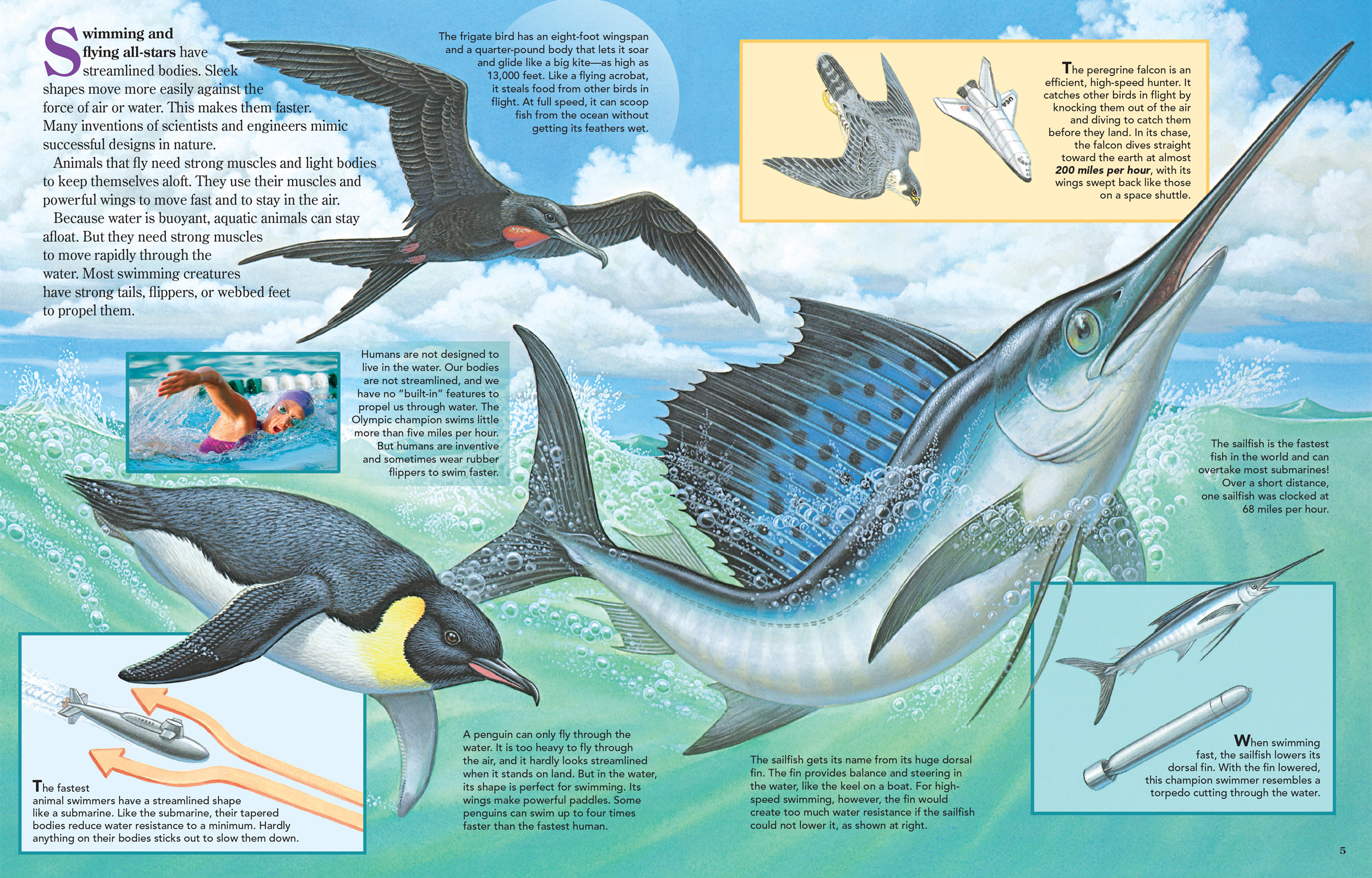
Swimming and Flying All-stars Are Streamlined
BySwimming and flying all-stars have streamlined bodies. Sleek shapes move more easily against the force of air or water. This makes them faster. Many inventions of scientists and engineers mimic successful designs in nature.
Animals that fly need strong muscles and light bodies to keep themselves aloft. They use their muscles and powerful wings to move fast and to stay in the air.
Because water is buoyant, aquatic animals can stay afloat. But they need strong muscles to move rapidly through the water. Most swimming creatures have strong tails, flippers, or webbed feet to propel them.
The frigate bird has an eight-foot wingspan and a quarter-pound body that lets it soar and glide like a big kite—as high as 13,000 feet. Like a flying acrobat, it steals food from other birds in flight. At full speed, it can scoop fish from the ocean without getting its feathers wet.
Humans are not designed to live in the water. Our bodies are not streamlined, and we have no “built-in” features to propel us through water. The Olympic champion swims little more than five miles per hour. But humans are inventive and sometimes wear rubber flippers to swim faster.
The fastest animal swimmers have a streamlined shape like a submarine. Like the submarine, their tapered bodies reduce water resistance to a minimum. Hardly anything on their bodies sticks out to slow them down.
A penguin can only fly through the water. It is too heavy to fly through the air, and it hardly looks streamlined when it stands on land. But in the water, its shape is perfect for swimming. Its wings make powerful paddles. Some penguins can swim up to four times faster than the fastest human.

The peregrine falcon is an efficient, high-speed hunter. It catches other birds in flight by knocking them out of the air and diving to catch them before they land. In its chase, the falcon dives straight toward the earth at almost 200 miles per hour, with its wings swept back like those on a space shuttle.
Over a short distance, the sailfish is the fastest fish in the world and can overtake most submarines! One sailfish was clocked at 68 miles per hour.
The sailfish gets its name from its huge dorsal fin. The fin provides balance and steering in the water, like the keel on a boat. For high-speed swimming, however, the fin would create too much water resistance if the sailfish could not lower it, as shown at right.
When swimming fast, the sailfish lowers its dorsal fin. With the fin lowered, this champion swimmer resembles a torpedo cutting through the water.

